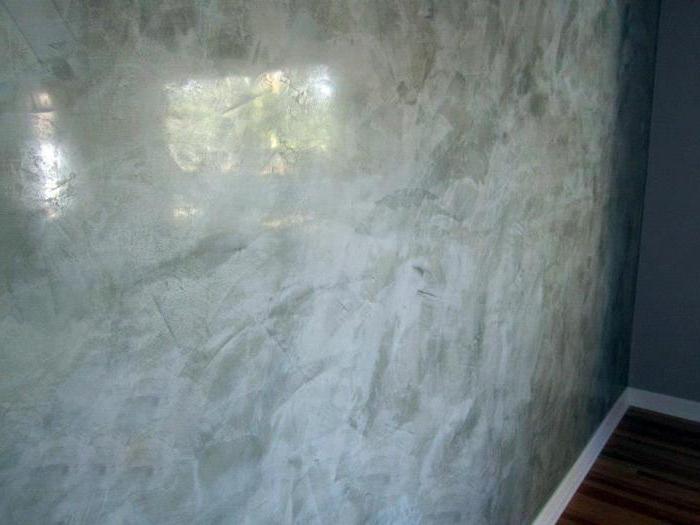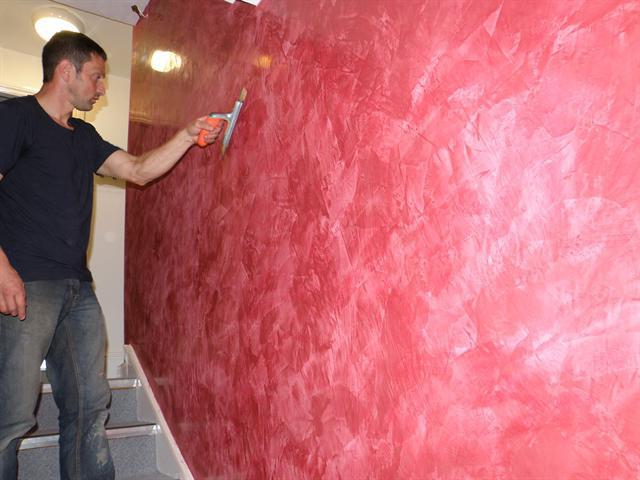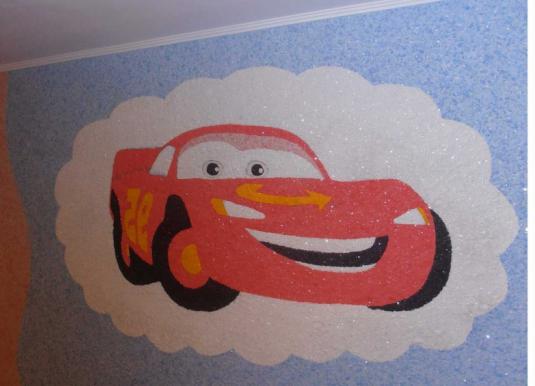In the repair and design of premises is oftendecorative plaster is used. Venetian plaster is perhaps the most sophisticated and prestigious option for wall decoration, which has, in addition to aesthetic, also valuable practical properties and looks modern at all times. Although Venetian plasters are particularly chic, decorative wall coverings can be other types - textured and structural, for example. At the same time, fillers are added to the standard plaster mix: fibers, chips, granules, etc., which makes the surface embossed and adds volume to it.
Venetian decorative plaster (photo below)- this is a very special kind of textured finish with unique characteristics, decorative properties and application technique. The choice of such decor for the room speaks about the wonderful taste and a certain status of its owner.

The history of Venetian plaster
Many sources agree that thistype of finish originally from ancient Rome. Then the marble was quite common material for construction, and after processing it left a large amount of dust and crumbs. Some enterprising master, whose name has not been preserved in history, came up with the idea of using this waste to decorate walls, mixing them with water and limestone. This coating was resistant, fireproof and moisture resistant.
For a while, humanity has forgotten the recipesuch a finishing material as decorative plaster. Venetian plaster in the Renaissance gained new popularity in the city of the same name, thanks to which it received such a name. For the city on the water, such a finish was very relevant, as compared with the marble massif, it had much less weight, and in terms of decorativeness it was not inferior to it at all.
In the formulation of Venetian plaster basicthe components remained the same: hydrated lime, water and stone powder, but at the same time natural coloring pigments extracted from plants and even the blood of animals began to be added to it. Stone dust already could be not necessarily marble, but also from some other valuable species: granite, malachite, onyx. It was on Venetian plaster famous Italian artists created their murals. Some of these works have survived to the present day, which indicates how wear-resistant this decorative plaster has. Venetian plaster was widespread not only in Italy, but also in the whole of Europe: it was used to decorate churches and rich houses.

Modern Venetian Plaster Formulation
Time, of course, affected the compositionVenetian plaster, and the achievements of the modern chemical industry could not affect it. Dyes are now used artificial and a much wider spectrum, and slaked lime is replaced by polymers or add them additionally. Of course, it is no longer possible to call such a coating a classic Venetian plaster, as it is absolutely environmentally friendly, but modern analogs have advantages as well. Modern decorative coatings are not so demanding on the appearance of the surface, as natural, and more plastic.

Advantages of Venetian plaster
Венецианская штукатурка - весьма прочное и wear resistant coating and serves on average about 15 years. The fact is that the surface of this decorative finish is saturated with carbon dioxide over time - its natural carbonation occurs, a solid film of carbon is formed.
Ухаживать за отделанной такой штукатуркой the surface is easy, as it can be subjected to wet cleaning. With a certain moisture resistance, the coating retains vapor permeability, its ecological purity allows using this finishing for residential premises with almost no restrictions. But for outdoor work it does not apply, since multiple temperature changes and precipitation will be disastrous for her.
In addition to the advantages already listed,it is thought that, despite the changeable fashion, decorative plaster will always be relevant. Venetian style, in which it fits most organically, is notable for its special nobility.
Venetian plaster application technique
Venetian plaster is a multi-layered coating, and this is precisely its beauty. Several transparent layers create depth, internal luminescence, and magically refract light in a magical way.
Putting decorative Venetian plastercarried out by a certain technology. First of all, attention should be paid to the quality of the base. It must be clean, dry and perfectly flat, otherwise all defects will not be hidden, but, on the contrary, emphasized. The number of layers, depending on the desired effect, can be from three to ten.
The first, the main layer is applied evenlythe following are finishing. They are applied with a flexible spatula, randomly, with short strokes. Each layer must be completely dry, and then it must be sanded before the next one is applied. Finishing is more convenient to keep small areas. You can apply layers that differ in shade, you get a very interesting texture.
The last layer - finishing - involves the application of wax. It serves as a protection against moisture and also gives the finish a finished look. The protective layer can be updated from time to time.

Venetian plaster in the interior
In principle, this type of finish will fit a varietystyles, from classic to minimalism and hi-tech. Perfectly emphasize the decorative plaster Venetian style, characterized by luxury and aristocratic. It perfectly replaces the wallpaper, and the choice of colors for this finish is the widest. Venetian plaster is universal: suitable for living rooms due to its decorative effect, for bedrooms, because it is environmentally safe, for kitchens, as it allows wet cleaning, and even for bathrooms, because it is sufficiently moisture resistant.
Manufacturers of decorative plaster on the marketpresented a wide selection. Positioning itself as a brand that produces exceptionally safe products, the Parade brand. Decorative Venetian stucco is also present in their collection.

The disadvantages of Venetian plaster
It is not that Venetian plasteris an affordable kind of decor. First of all, such a finish is quite expensive, and the technology of its application is not very simple and will require patience, thoroughness and some experience with such a coating as decorative plaster. Venetian plaster, however, is worth it. This finish looks exceptionally impressive.










